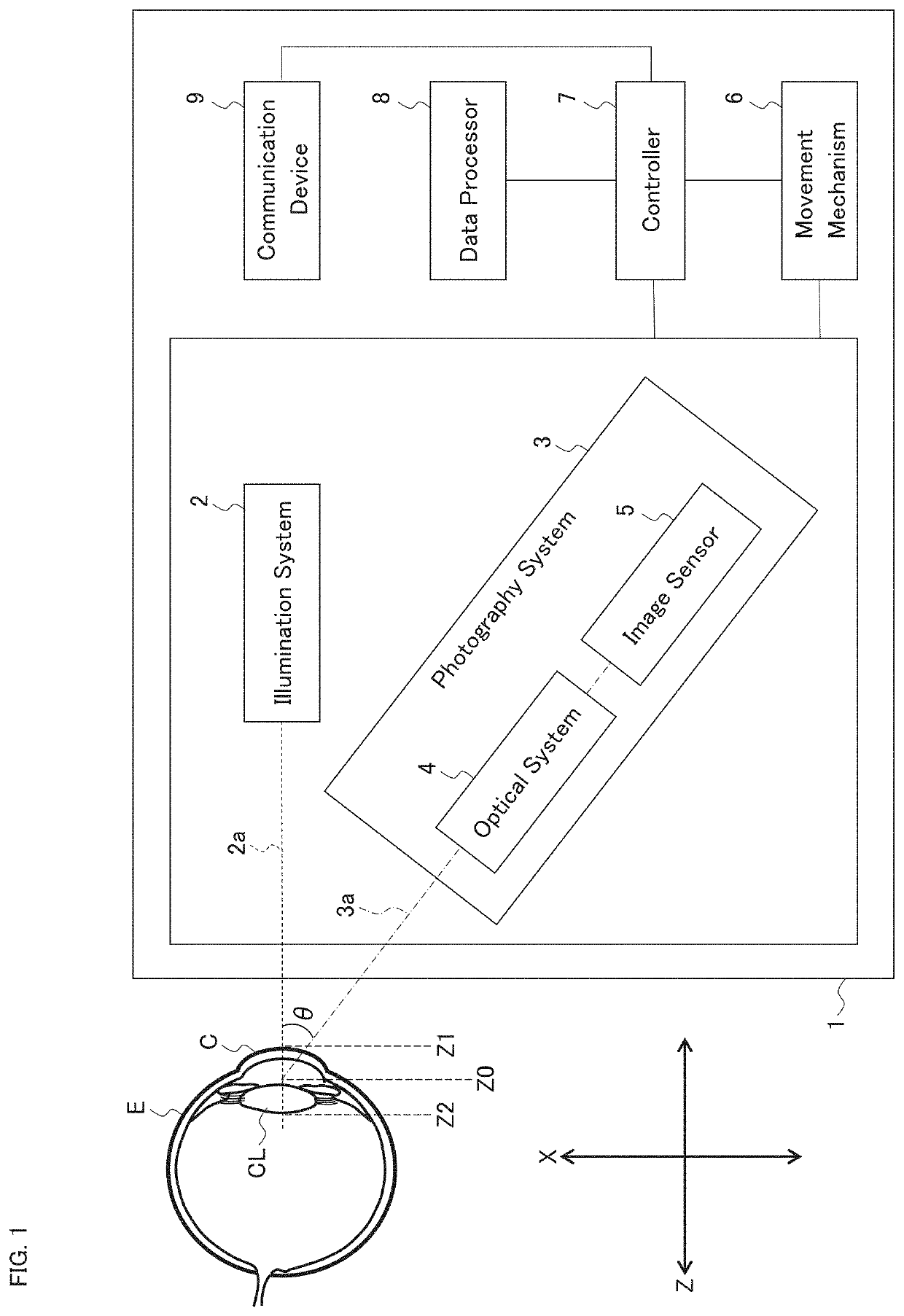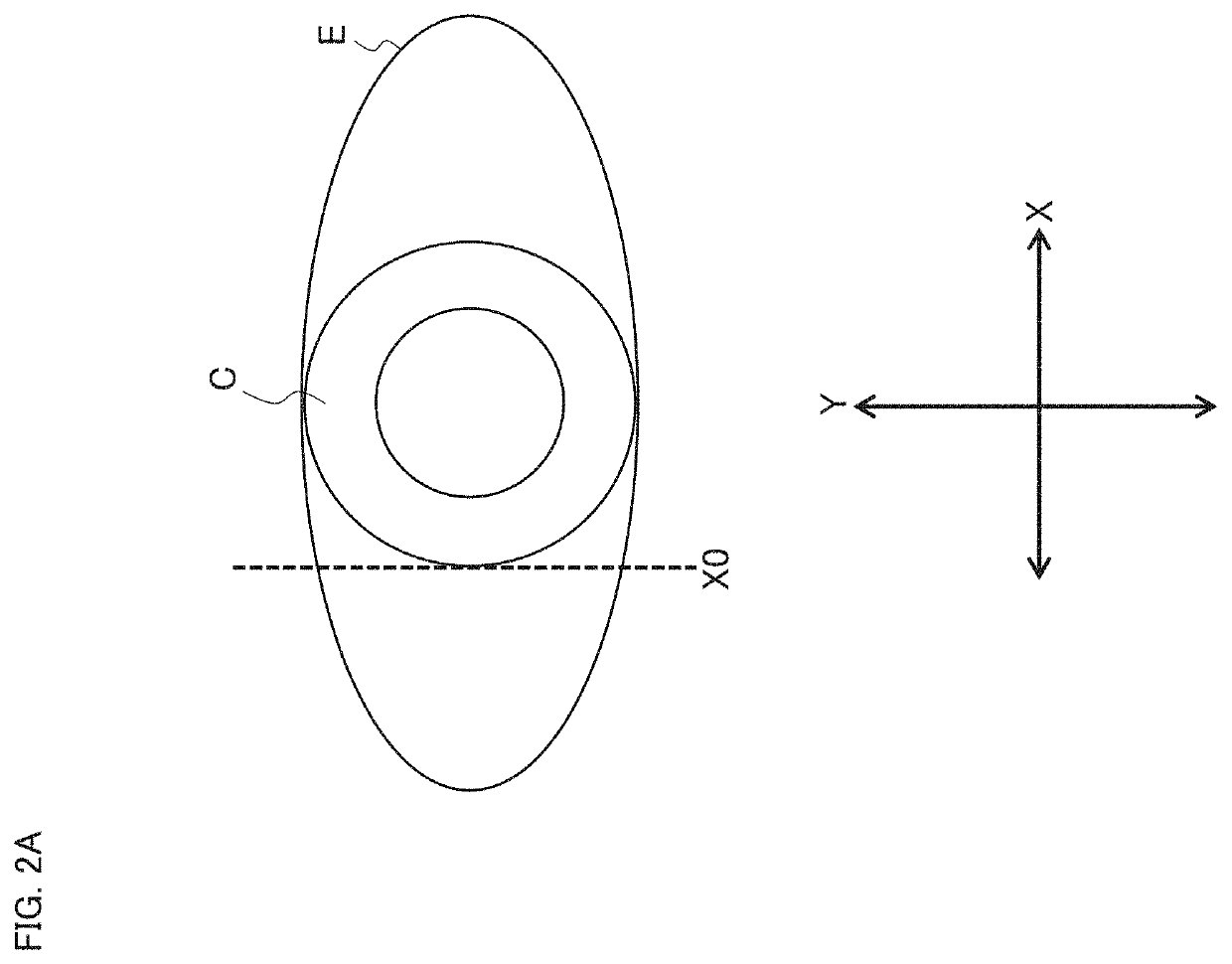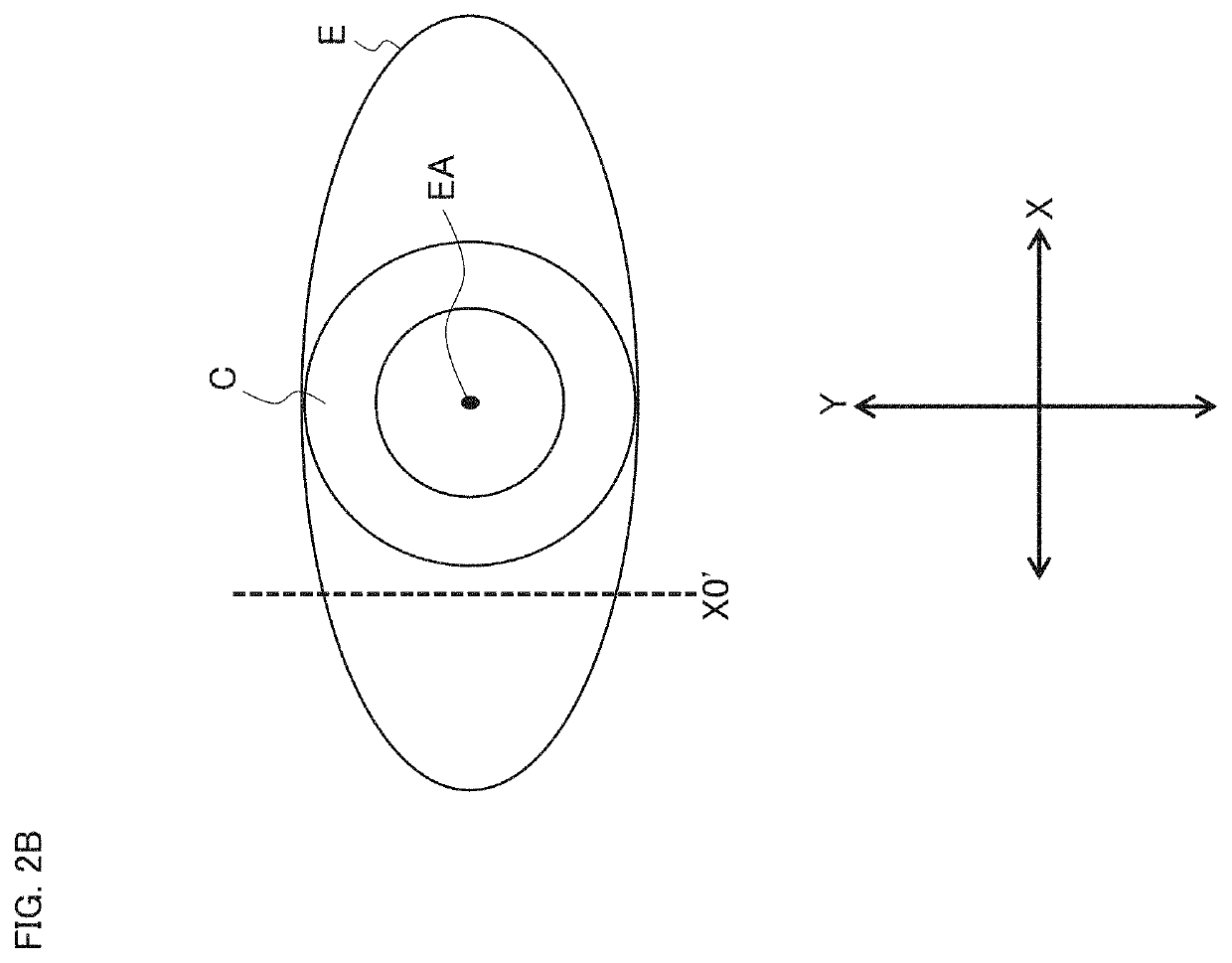Slit lamp microscope and ophthalmic system
- Summary
- Abstract
- Description
- Claims
- Application Information
AI Technical Summary
Benefits of technology
Problems solved by technology
Method used
Image
Examples
first embodiment example
[0109]FIG. 1 shows an example of the slit lamp microscope according to the first embodiment example.
[0110]The slit lamp microscope 1 may be used for photographing the anterior segment of the subject's eye E, and includes the illumination system 2, the photography system 3, the movement mechanism 6, the controller 7, the data processor 8, and the communication device 9. The cornea of the subject's eye E is denoted by the reference character C, and the crystalline lens is denoted by the reference character CL.
[0111]The slit lamp microscope 1 may be a single apparatus, or may also be a system that includes two or more apparatuses. In the case where the slit lamp microscope 1 is configured as a system, the slit lamp microscope 1 may include a main apparatus, a computer, and a communication device. Here, the main apparatus may include the illumination system 2, the photography system 3, and the movement mechanism 6, the computer may include the controller 7, the data processor 8, and the...
second embodiment example
[0190]The present embodiment example describes a configuration of an optical system applicable to the slit lamp microscope 1 of the first embodiment example. An example thereof is shown in FIG. 5. In addition to the elements shown in FIG. 5, the slit lamp microscope 1 of the present embodiment example may further be provided with any of the elements shown in other embodiment examples. For example, the controller 7, the data processor 8, the communication device 9, etc. of the first embodiment example may be provided.
[0191]The illumination system 20 shown in FIG. 5 is an example of the illumination system 2 of the first embodiment example, and the pair of the left photography system 30L and the right photography system 30R is an example of the photography system 3. The reference character 20a denotes the optical axis of the illumination system 20 (referred to as the illumination optical axis), the reference character 30La denotes the optical axis of the left photography system 30L (r...
third embodiment example
[0222]The present embodiment example will describe a configuration example of the processing system applicable to the slit lamp microscope 1 of the first embodiment example. As shown in FIG. 5 described in the second embodiment example, for example, the photography system 3 of the present embodiment example may be configured in such a manner that the left photography optical axis 30La and the right photography optical axis 30Ra are tilted in mutually opposite directions with respect to the illumination optical axis 20a. The processing system of the present embodiment example is configured to execute the processing related to an artifact as described below.
[0223]The data processor 8A shown in FIG. 7 is an example of the data processor 8 of the first embodiment example. The data processor 8A includes the image selecting processor 81.
[0224]The image selecting processor 81 is configured to judge whether an artifact is contained in at least one of two images that are substantially simult...
PUM
 Login to View More
Login to View More Abstract
Description
Claims
Application Information
 Login to View More
Login to View More - R&D
- Intellectual Property
- Life Sciences
- Materials
- Tech Scout
- Unparalleled Data Quality
- Higher Quality Content
- 60% Fewer Hallucinations
Browse by: Latest US Patents, China's latest patents, Technical Efficacy Thesaurus, Application Domain, Technology Topic, Popular Technical Reports.
© 2025 PatSnap. All rights reserved.Legal|Privacy policy|Modern Slavery Act Transparency Statement|Sitemap|About US| Contact US: help@patsnap.com



